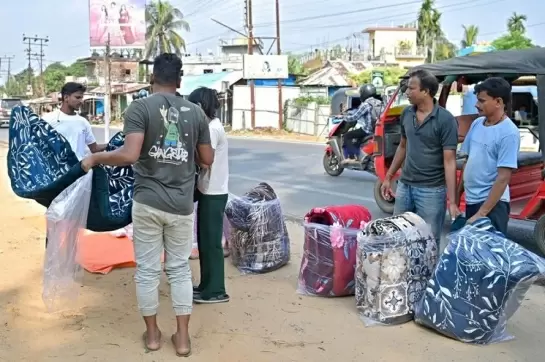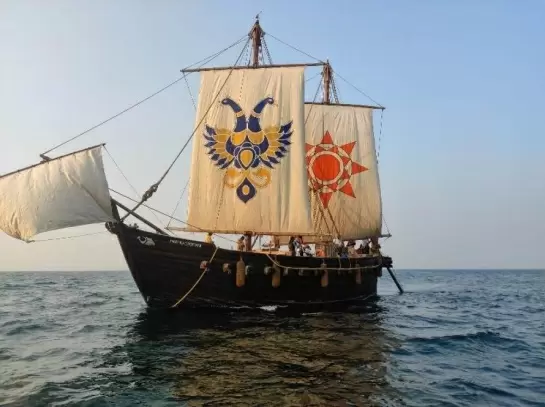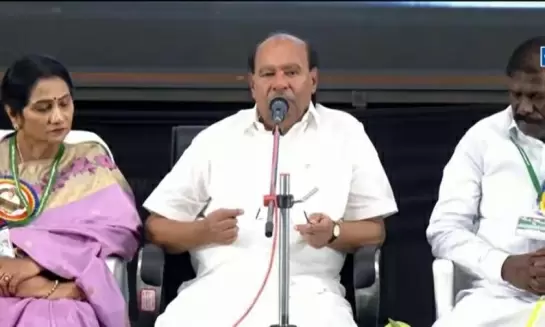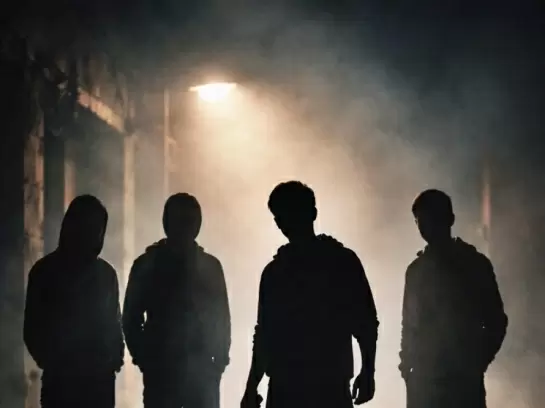Swallowing the criticism of villagers, a boatman goes ahead and builds a bridge
23-November-2015
Vol 6 | Issue 47
Usually, to have a bridge called after you, you need to be a river, a saint, a leader or perhaps a great engineer - or a famous departed soul. But boatman Sheikh Lalchand, 43, from a tiny village in West Bengal has the Lalchand Bridge named after him, right in his lifetime.
That’s because it was he who had this bamboo bridge over River Mudeswari built, single-handedly solving the accessibility problems of his own village and others close by.
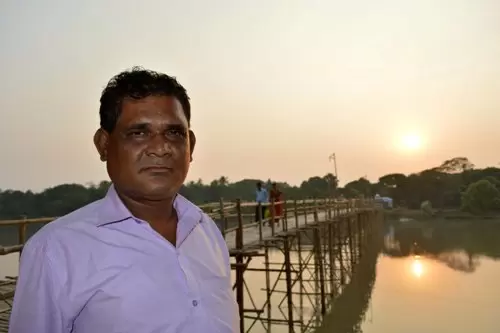 |
|
Sheikh Lalchand’s bamboo bridge that can carry two-wheelers and lightweight cars was constructed at a cost of Rs.7.5 lakh (Photos: Monirul Islam Mullick)
|
It sounds like a ‘believe it or not’ headliner: how can one man build a bridge? You will know when you meet Lalchand, a boatman in Kulia, a remote village in Howrah district, some 80 kilometers from Kolkata.
Lalchand’s village falls under the Ghoraberia-Chitnan gram panchayat that neighbours the Bhatora gram panchayat. The two panchayats form an island surrounded by three rivers – Mundeswari, Damador and Rupanarayan.
On the other end of the Mundeswari river is Kashmuli gram panchayat. By building the bridge, Lalchand has connected more than one lakh villagers of the three gram panchayats.
There was no doubt that this bridge was sorely needed. “I had been rowing my boat for more than six years, ferrying people from one side of the river to the other,” Lalchand says.
A kind man, in an emergency, he didn’t charge them a paisa. It, however, became impossible to operate the boat because of the siltation near the riverbank.
High tide brought its own problems, but people suffered the most during low tide when they had to cross the river in knee-deep slush and mud because boats could not operate.
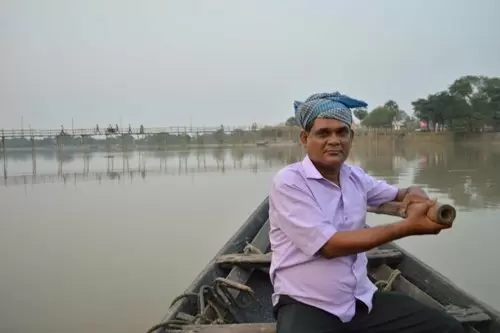 |
|
Boatman Lalchand rose to the occasion when the government was dilly-dallying on constructing the bridge
|
Students and pregnant women were the worst sufferers. Some pregnant women even died as they couldn’t reach the hospital in time.
Lalchand spent sleepless nights thinking about the problems faced by the people, especially patients, who had a tough time crossing the river by boat.
It wasn’t that no one else had thought of it before. But nobody actually did anything.
Nirmal Hazra, a villager, says that the erstwhile Left Government laid the foundation stone of the bridge thrice during its tenure, but the work never began.
“Days before the Assembly polls in 2006 and 2011,” he says, “political leaders visited our village and laid the foundation stone, but did nothing after they assumed power.” Even the village panchayats had lacked the gumption to take this forward.
Seeing the pathetic condition of his village folk and the apathy of the government, Lalchand decided to do something, all on his own.
While studying up to Class VIII, he became an ardent follower of Rabindranath Tagore and was deeply inspired by the philosophy of the song written by the Nobel Laureate, which goes: Jodi tor dak sone keu na ase, tale ekla cholo re (If no one responds to your call, then go your way alone).
When he first shared his idea of building the bridge at the village chaupal (meeting place) in September 2014, the villagers laughed at his “stupidity” – a man who earned a mere Rs 400 on a good day, wanted to build a bridge governments hadn’t!
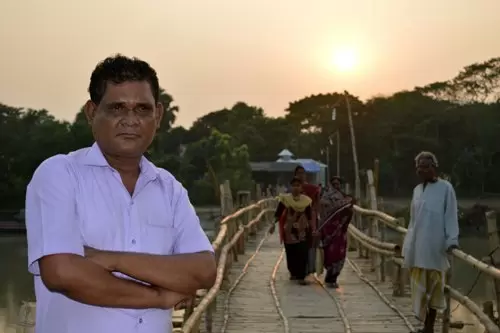 |
|
Pedestrians pay Rs 2 to use the bridge
|
“They declared that I needed an immediate mental check-up,” he recalls. “Still, I swallowed their criticism with a smile.”
After much persuasion, he finally got the permission from the gram panchayat to build the bridge, as long as he bore all the costs.
Then began the struggle for money. “The biggest hurdle was arranging funds,” Lalchand says. He sold his wife’s jewellery for 3 lakh rupees, and borrowed another 4 lakh from his friends; then he added his savings to the kitty.
His wife was furious over his eagerness to help people at the cost of his own life’s savings, but Lalchand was adamant.
“Nothing was more important than alleviating the hardship of thousands of villagers who are like my brothers and sisters,” he says.
After the funds had been partly arranged, Lalchand travelled to Midnapore, a neighbouring district, seeking people skilled in constructing bamboo bridges. It took him a week to find them.
The work finally began in November 2014. The construction of the 600m-long and 2.20m wide bridge, using 3,000 logs riveted with nuts and bolts, and secured with ropes, was completed in a record 22 days by 20 workers working day and night.
In order to make the structure sturdy, bamboos were inserted 10 feet down the riverbed. The bridge was finally opened to public in January 2015.
Lalchand took the bridge on lease from the gram pachayat at an annual payment of Rs 1.5 lakh in order to recover the Rs 7.5 lakh rupees that he incurred to have it constructed.
A signboard displays the rate chart: Rs 2 for those on foot or on a cycle; Rs 5 for two-wheelers; Rs 50 for Magic IRIS Tata vehicles; and Rs 100 for a Maruti van.
.webp) |
|
Lalchand finds contentment in seeing that his bridge has changed the lives of the villagers for the better
|
Students and senior citizens need to pay only half the fee, while farmers are charged Rs 50 monthly.
More than 2,000 people use the bridge every day. Two persons on vehicles are not allowed to cross each other side by side as the bridge is narrow and they might run the risk of running into each other. There are four surveillance cameras to monitor the movement of vehicles.
If building a bridge is tough, looking after it is no mean task either. Lalchand says that he incurs a heavy expenditure to maintain the bridge and pay his employees, “The bridge has broken down twice in the last year, once during monsoon and then when it was hit by a boat,” he explains.
In addition, six persons are employed round the clock for the inspection and maintenance of the bridge and the four surveillance cameras to monitor the movement of vehicles as well as for security.
According to him, he spent nearly Rs 4 lakh in its repair – again mortgaging the wedding jewellery of his elder daughter Sonali, and using up the savings of his younger daughter, Koel, who is a nurse.
The members of both the gram panchayats and local residents are full of praise for this hero, whom they had labelled ‘crazy’.
“It is difficult to find words to describe Lalchand’s noble deed,” says Manoranjan Mondal from the neighbouring Bhatora gram panchayat.
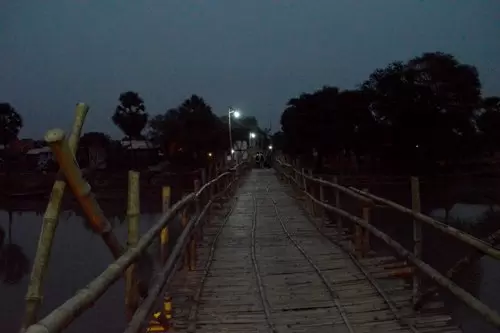 |
|
The illuminated Lalchand bridge at night
|
“The bridge has saved several lives as ambulances are now able to ply it,” adds Ashok Gayen from the Ghoraberia-Chitnan gram panchayat.
Interestingly, the bamboo bridge has made weddings easier! “People from distant areas were reluctant to get their children married here,” says Achinto Maity of Lalchand’s village, “because there was no accessibility. The bridge saved us. The marriage of my daughter is fixed for next year.”
Villagers say that good connectivity has also led to a hike in land prices - people now want to settle in Lalchand’s village because of its proximity to the state capital.
The bamboo bridge has reduced travel time to Kolkata, earlier accessed only by road, by a good two-three hours.
However, the man who built the bridge no one else would, wants an even more effective solution: Lalchand is in favour of the government replacing the bamboo bridge with an iron structure to facilitate the village folk and the passage of heavy goods vehicles even if it would mean loss of income for him.
“The permanent bridge will help villagers sell their produce directly in local markets or in distant areas,” he says, strolling up the bridge, as the sun begins to drop behind the coconut trees, casting its rays on the river.
Not such a crazy idea now, is it?










